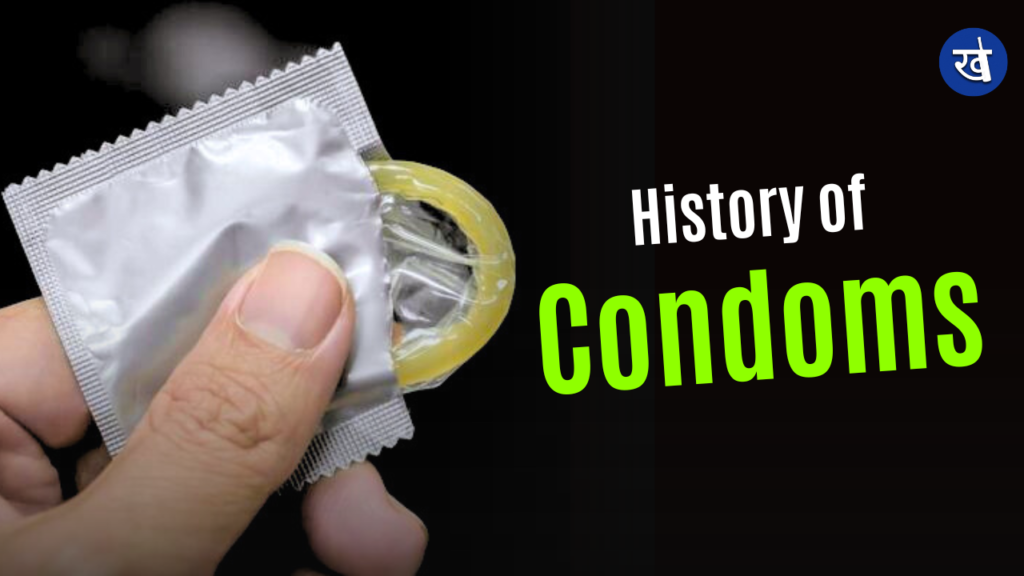
Condoms, one of the oldest and most essential tools for sexual health and contraception, have a history that stretches back thousands of years. From their humble beginnings as primitive sheaths to the sophisticated latex and polyurethane models of today, the evolution of condoms is a testament to human ingenuity and the enduring pursuit of safer, more responsible sexual practices. This article delves into the fascinating history of condoms, tracing their development through the ages.
The History of Condoms
Condoms are a crucial part of modern sexual health and contraception, but their history is a tale of innovation and adaptation that spans thousands of years. This article delves into the intriguing history of condoms, tracing their evolution from ancient sheaths to the sophisticated options we have today.
Ancient Origins
The history of condoms dates back to ancient civilizations. The earliest evidence of condom-like devices can be traced to ancient Egypt, where they were made from linen sheaths and were primarily used for protection against sexually transmitted infections (STIs) rather than contraception. The ancient Romans also employed similar devices, often crafted from animal bladders.
Also Read- Horoscope Compatibility: Myth or Relationship Fun?
16th Century Europe
Condoms, as we know them today, started to take shape during the 16th century in Europe. These early versions were typically made of animal intestines, most commonly sheep intestines. They were often referred to as “skin condoms” and were used to prevent both unwanted pregnancies and STIs. These early condoms were reusable, but they required thorough cleaning and maintenance.
18th and 19th Century Advancements
The 18th and 19th centuries saw significant advancements in condom technology. Manufacturing techniques improved, making condoms more widely available. The quality of materials used also evolved. Instead of animal intestines, condoms began to be made from rubber. Charles Goodyear’s invention of vulcanized rubber in the mid-19th century revolutionized condom production. The newfound durability and stretchiness of rubber made condoms more reliable and comfortable.
However, societal attitudes towards condoms were mixed during this period. While some people recognized their importance in preventing disease and unwanted pregnancies, others viewed them as immoral and resisted their use.
Also Read- Sunny Leone’s Bollywood Success Story
20th Century Innovations
The 20th century brought further innovations in condom design and production. Latex, a synthetic rubber, began to replace natural rubber due to its strength and elasticity. This marked a significant improvement in both safety and comfort.
World War II was a turning point in the history of condoms. The U.S. military distributed condoms to soldiers to help combat the spread of STIs. This helped destigmatize their use and popularized condoms in the civilian population.
In the 1980s, the advent of the HIV/AIDS epidemic underscored the critical role condoms played in preventing the transmission of this deadly virus. Public health campaigns worldwide promoted condom use as a primary method for reducing the risk of HIV infection, further highlighting their importance.
Modern Condoms
Today, condoms have come a long way from their ancient origins. They are now available in various materials, sizes, and textures to cater to individual preferences and needs. In addition to latex, polyurethane and polyisoprene condoms have been developed, which are suitable for individuals with latex allergies.
Furthermore, technological advancements have led to innovations such as ultra-thin condoms for heightened sensitivity and the incorporation of lubricants and spermicides for increased protection.
Challenges and Controversies
Despite their long history and numerous advantages, condoms have faced challenges and controversies throughout the ages. Societal taboos surrounding sexuality, religious opposition, and a lack of comprehensive sexual education have hindered their widespread use in some regions. Additionally, debates around condom distribution and accessibility continue to this day, with some arguing for increased availability and others advocating for abstinence-only education.
Also Read- 10 Historical Sex Facts School Never Taught You
The history of condoms is a remarkable journey that spans thousands of years, from their rudimentary origins to the highly engineered and widely accessible products of today. These humble devices have played a pivotal role in the promotion of safe sex, the prevention of sexually transmitted infections, and the control of family planning. Despite challenges and controversies, condoms remain an indispensable tool for responsible sexual health practices, proving that innovation and adaptation are key to their enduring relevance in an ever-changing world. As society continues to evolve, so too will the role and importance of condoms in promoting healthier and safer sexual experiences for all.